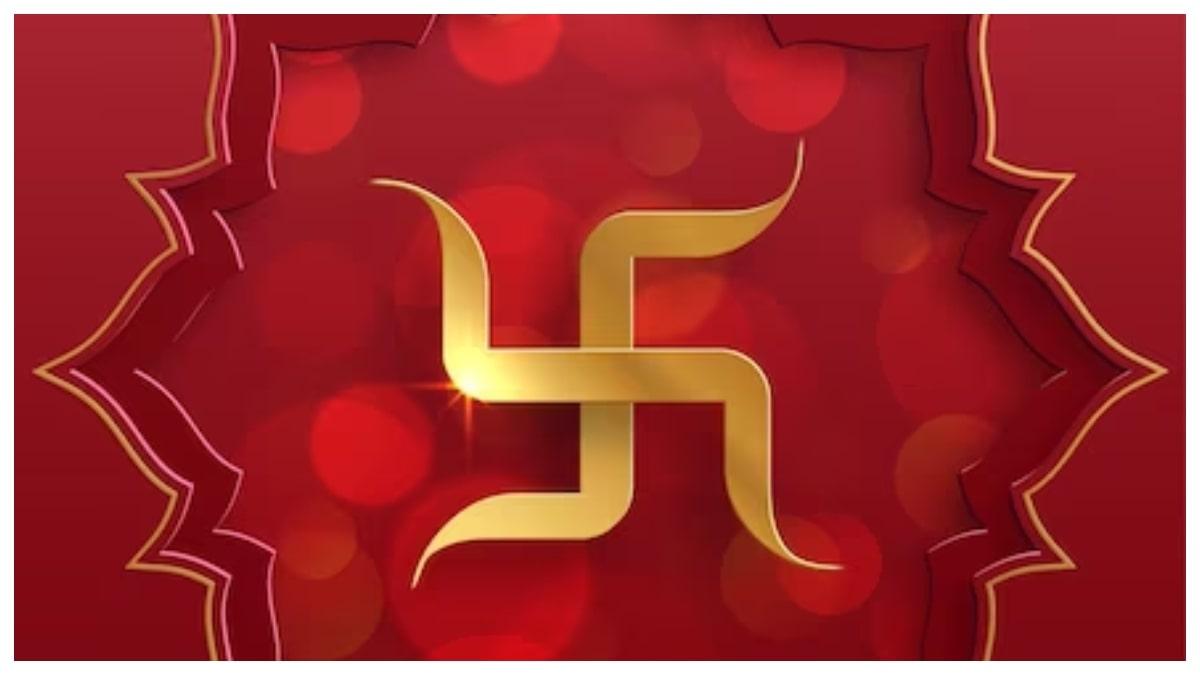Decoding the Swastika: Spiritual Meaning Behind Its Four Arms
Woven into the all significant rituals of Hindu culture, the Swastika stands as a timeless symbol of sacred energy. Commonly seen on temple walls, doorways, and sacred rituals, this cross-like symbol with bent arms is a visual code of profound philosophical meaning. While often drawn instinctively, many don’t pause to ask: What do those four arms really represent? This article delight is all about Decoding the Swastika, and focusing on the significance of its four arms. As we uncover its layers, you’ll see how this ancient symbol offers deep wisdom for modern living too.
Decoding the Swastika
Spiritual Meaning Behind Its Four Arms
Four Arms as the Cycle of Birth
Another interpretation sees the four arms as representing the continuous cycle of birth, life, death, and rebirth—the concept of Samsara. In Hindu philosophy, life is not a straight path but a recurring cycle until we attain moksha, or liberation. The turning motion of the Swastika suggests movement and flow, reminding us that change is constant and that every end is a new beginning. This helps deepen our understanding of time, karma, and the soul’s journey through different lives.
Four Arms as Directions: A Symbol of Balance
The four arms of the Swastika point toward the cardinal directions—North, East, South, and West. The four arms of Swastika reminds us that energy and consciousness flow in every direction. It also signifies that wherever you go, the divine is with you, guiding and protecting your journey. This directional symbolism encourages a life rooted in stability, awareness, and connection with the universe.
Four Arms as Purusharthas
The Swastika’s arms are also seen as symbols of the four Purusharthas—the four goals of human life: Dharma (righteous duty), Artha (wealth and prosperity), Kama (desire and enjoyment), and Moksha (liberation). The Swastika, in this context, becomes not just a sacred sign but a reminder to lead a life that honors duty, seeks growth, enjoys beauty, and ultimately aims for spiritual freedom.
Swastika and Hindu Deities: Surya and Ganesha
The Swastika is closely associated with Surya, the sun god. Its clockwise (right-facing) rotation mirrors the movement of the sun across the sky, symbolizing light, life, and cosmic energy.
Lord Ganesha, the remover of obstacles, is often depicted seated on a lotus resting on a bed of swastikas, reinforcing the Swastika’s association with auspicious beginnings and success. This is why it is drawn at the start of new ventures, ceremonies, or housewarmings.
Swastika in Yantras: Channeling Sacred Energy
The Swastika is a prominent feature in yantras. Geometrical diagrams used during meditation and rituals to focus spiritual energy. Its structure is not just decorative but serves as a symbolic container of positive vibrations and divine energy. Drawing the Swastika before a puja is believed to invite protection, clarity, and divine blessings into the space.
Right-facing and Left-facing Swastikas: Pravritti ( प्रवृत्ति ) and Nivritti ( निवृत्ति )
There are two types of Swastikas:
- The right-facing Swastika (clockwise) is the one commonly seen in Hindu rituals. It symbolizes Pravritti ( प्रवृत्ति ) —the path of action, creation, expansion, and involvement in worldly life.
- The left-facing Swastika (counterclockwise) symbolizes Nivritti ( निवृत्ति )—withdrawal, introspection, dissolution, and the inward journey. These represent two aspects of Lord Brahma, the creator: the movement of the universe outward (evolution) and inward (involution).
Both forms highlight the cyclical nature of existence and the balance between material and spiritual life.
Swastika Beyond Hinduism: Decoding the Swastika
Though deeply rooted in Hindu tradition, the Swastika is also a sacred symbol in Buddhism and Jainism:
- In Buddhism, it represents the footprints of the Buddha and often symbolizes eternity or the Dharma.
- In Jainism, it symbolizes the seventh Tirthankara and the four states of existence: heavenly beings, human beings, hellish beings, and animals/plants.
This shared reverence across dharmic traditions shows the universality and timelessness of the Swastika.
Final Takeaway | Decoding the Swastika
The Swastika invites us to align our lives with truth, order, and auspiciousness. It gently reminds us that life has direction and meaning. When we truly understand what this symbol stands for, it helps us live more mindfully. Every time we draw or see a Swastika, we can pause and remember to align our thoughts, actions, and goals with the deeper values it represents.
Further insights, read The Essentials of Hinduism by Swami Bhaskarananda https://amzn.to/42LenPo
Read also : 10 Timeless Ayurveda Sutras That Still Hold True Today ! https://thebrightdelights.com/10-timeless-ayurveda-sutras-that-still-hold-true-today/
